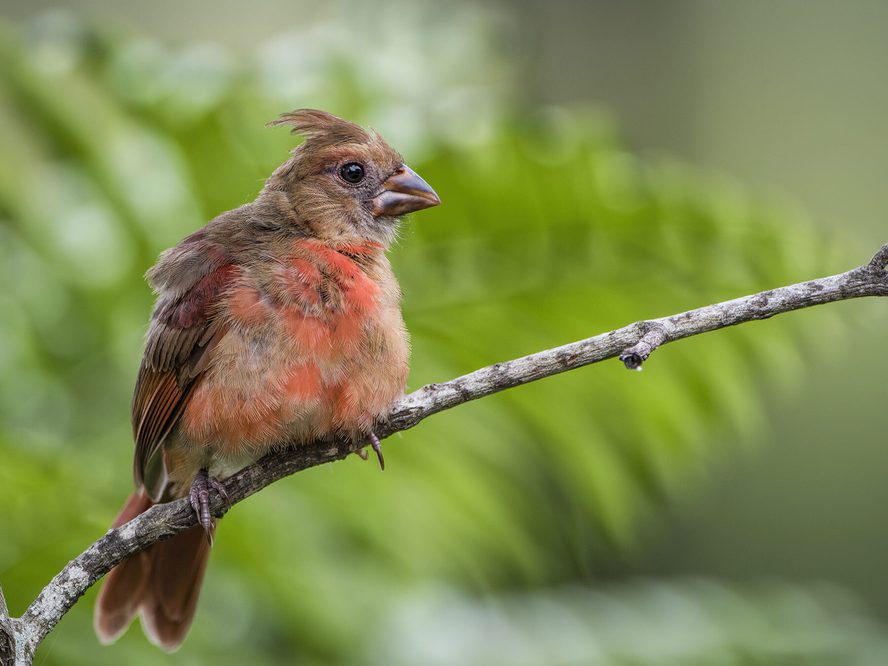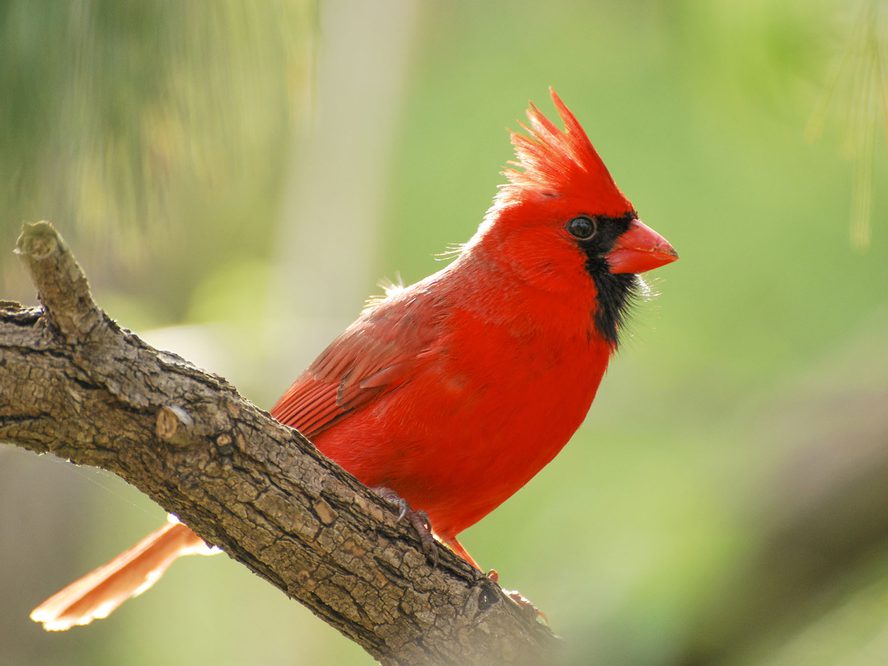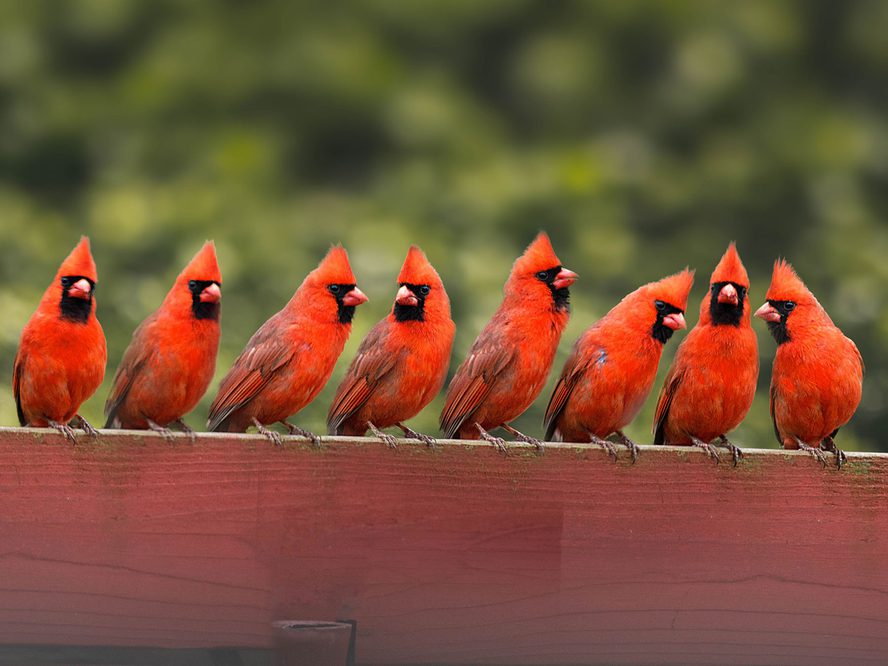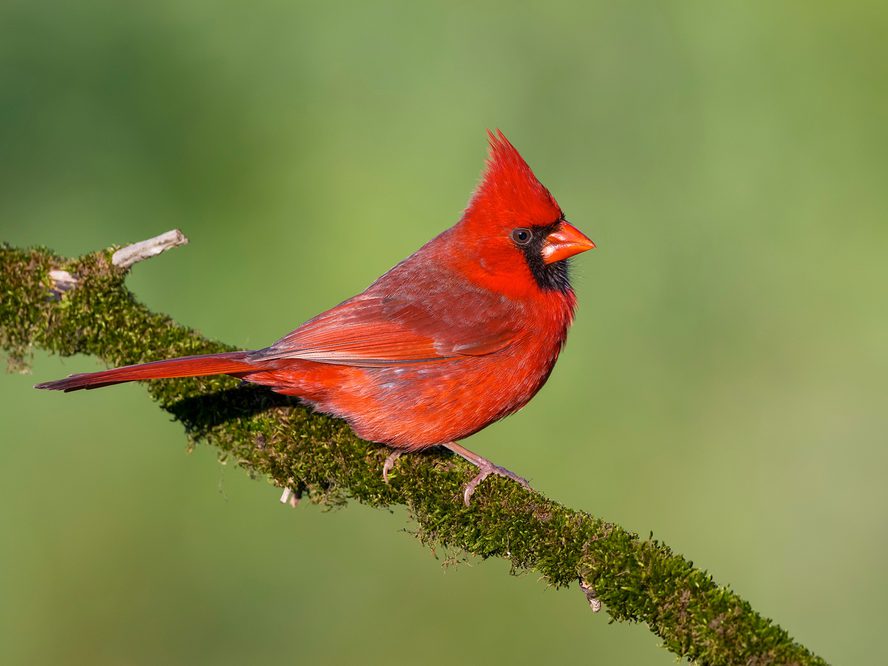Jump to Section
Northern Cardinals in Winter (Location, Behavior, Survival + FAQs)
Last updated: 20 February 2023
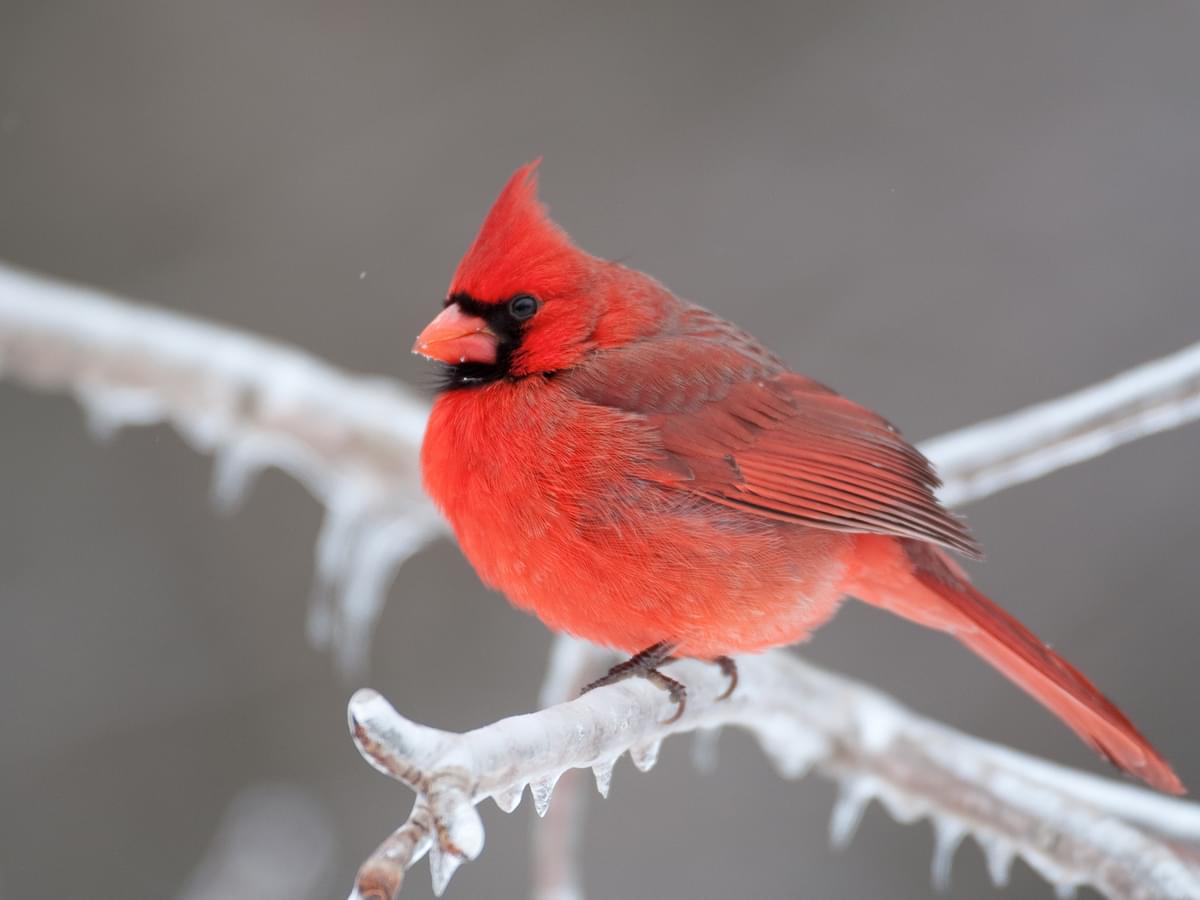
One of the bird species most commonly associated with winter snow scenes, due to their stand-out red plumage, Northern cardinals are a frequent sight in urban backyards when temperatures plummet.
Foraging for high-energy food to keep their metabolism functioning, flocks of cardinals can be seen all year round, and do not head south in winter in search of warmer surroundings.
To survive in such extreme conditions, the species has developed a number of cold-weather adaptations, including shivering and the ability to lower their own body temperature temporarily to avoid freezing on the harshest of nights.
To learn more about these extreme survival skills, please keep reading our guide to Northern cardinals in winter.

Cardinal perched on tree branch during heavy winter snow in Virginia
Winter range, habitat and movements
Do Northern Cardinals fly south for the winter?
Cardinals are not migratory birds, and tend to spend their entire life within half a mile of where they were born. Even in regions that experience the harshest winter conditions, with deep snow, blizzards, and prolonged periods of subzero temperatures, cardinals remain all year round, instead relying on some of the species’ special adaptations to cope with such unfavorable conditions.
What is the winter range of Northern Cardinals?
Cardinals usually remain close to their breeding territories all year round, so their distribution and range is the same in the winter as it is in summer.
Northern cardinals are found across the United States and Canada east of the Great Plains. Small populations are present in southeastern California and parts of New Mexico and Arizona.
The range of cardinals extends south into Mexico and deeper into Central America, reaching Guatemala and Belize.
Where do Northern Cardinals live in the winter?
Northern cardinals tend not to move too far from their home breeding grounds, and do not migrate during winter. They seek shelter in the dense branches of conifer trees, particularly fir, cedar, and pine, and stay within easy reach of their favored foraging spots of backyards with well-stocked feeders.

Male (left) and female (right) Cardinals perched in a snow covered tree
Winter survival
How do Northern Cardinals prepare for winter?
As winter approaches, cardinals tend to gather together in foraging groups. This maximizes their chance of survival and finding food, increasing their ability to withstand freezing conditions by being able to up their food intake to meet their energy expenditure needs.
How do Northern Cardinals stay warm?
Rather than roosting in a cavity or nest box for warmth during winter, cardinals seek shelter in dense evergreen foliage. They fluff up their feathers, creating a pocket of air near to their body, which helps them to stay warm.
Another adaptation for staying warm is shivering, which makes it possible to maintain their body temperatures. However both of these practices require significant amounts of energy, and can only be carried out in short bursts.
Northern cardinals are able to temporarily lower their own body temperature by 3 to 6° F on the coldest nights, putting themselves into a state of torpor, which helps to conserve important energy reserves and fat stores.
Can Northern Cardinals survive in the cold?
Northern cardinals can survive the extreme cold, but need to work hard and remain vigilant, and also take advantage of every opportunity to eat and raise their energy levels. The colder it is, the more calories they use, so high calorie foods, such as peanuts and sunflower seeds.
Based on analysis of banding data, only around 60 percent of adult cardinals survive from one season to the next, and one theory to explain this is that a sizable percentage succumb to the cold each winter.

Male Cardinal fluffed up to keep warm in the cold winter
Winter diet and foraging
What do Northern Cardinals eat during the winter?
During the spring and summer, insects form a considerable portion of a Northern cardinals' diet, as well as fruit, seeds, and grains. With insects not as readily available as the warmer months of the year pass, the feeding focus shifts to berries and seeds, as well as anything that may be left out at or under backyard feeders, including sunflower and safflower seeds, peanuts, and suet.
Do Northern Cardinals store food for winter?
It is not typical behavior for Northern cardinals to cache food. They depend on bird feeders and backyard feeding platforms in the winter months, and when they discover a well-stocked site, they will visit it regularly, particularly first thing in the morning and at dusk each day.

Northern Cardinal male eating berries in the winter
How do Cardinals drink and find water in winter?
Fresh water is vital for cardinals to drink and bathe in, and they rely on backyard bird baths, especially during winter months. In the coldest regions of their range, it’s recommended to use a heated bird bath to ensure the water remains ice-free.
If there is no bird bath in a backyard, Northern cardinals will go further afield for water, visiting streams, ponds, and rivers to drink.
Do Northern Cardinals visit feeders in the winter?
Northern cardinals do visit feeders and the areas around them and according to studies, sunflower seeds, particularly the black-oil type, are among the most popular seeds taken.
Primarily ground feeders, these scarlet songbirds may struggle to forage effectively when the ground is covered with deep snow.
Householders are encouraged to clear a small area of their lawn and scatter sunflower seeds, peanuts and suet on the ground for foraging flocks of Northern cardinals to feast on.

Northern Cardinal at a feeder in winter
Winter behavior
Spotting Northern Cardinals in winter
The bright plumage of a male Northern cardinal makes it easy to spot, especially against a backdrop of pure white snow. Female Cardinals are less distinctive, with more muted colors, but can still be easily identified with their orange beaks and rosy crests – and the fact they will frequently be in the company of their crimson male counterparts.
Are Northern Cardinals active in winter?
Northern cardinals need to stay active in winter, as their feeding demands are much increased due to the amount of energy they use up trying to keep warm and ultimately stay alive. They forage for long periods of time to maximize their food intake during colder weather, seeking any kind of scraps that might give them a quick boost.
What do Northern Cardinals do in winter?
Although they do not migrate, Northern cardinals do need to slightly adjust their usual routines in colder months, upping their feeding schedule intensely to ensure they have enough food to keep their energy levels up. Feeding is common at dawn and dusk, to regain energy burned from lowering their body temperature overnight, and to boost stores for the night ahead.

Female Cardinal on the ground in the snow
Do Northern Cardinals have winter plumage?
Cardinals retain their crimson plumage throughout the year, and if anything, it may appear even brighter than usual during winter. In late summer, Northern cardinals undergo a full molt, with their new set of feathers complete by mid-winter. At this time, the cardinal’s undamaged plumage is at its most brilliant.

Northern Cardinal in the snow
Do Northern Cardinals form flocks in the winter?
Northern cardinals are monogamous during the breeding season, but as soon as they have finished raising their young, they disperse into wider foraging flocks. These flocks are known collectively as colleges, decks, radiances, or Vaticans.
Feeding together minimizes the chances of being taken by a predator – cardinals’ scarlet plumage makes it harder for them to blend into their surroundings, making them an easy target for birds, such as sharp-shinned hawks.
Large numbers of birds feeding together actually makes it more difficult for a predator to hunt successfully as the extra eyes serve as an effective early warning system.
Do Northern Cardinals nest in the winter?
The typical nesting season for Northern cardinals lasts from March to September, and winter nesting is never attempted, due to the unlikelihood of newborn chicks surviving in freezing temperatures, and the scarcity of food. Cardinals are not cavity nesters and do not build, sit, or sleep on nests outside of the breeding season.

